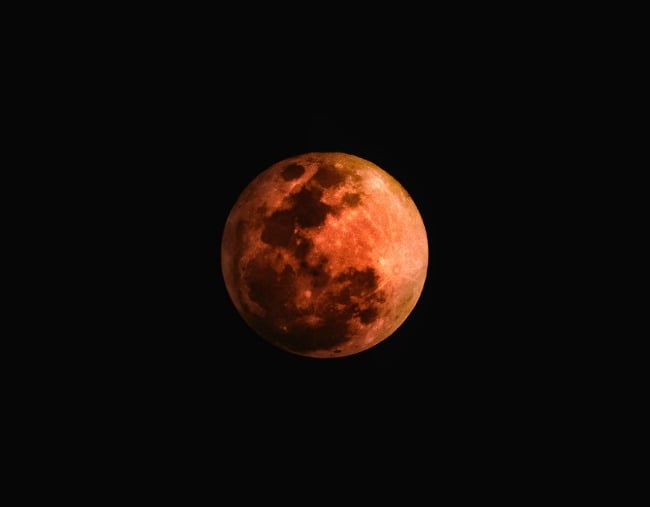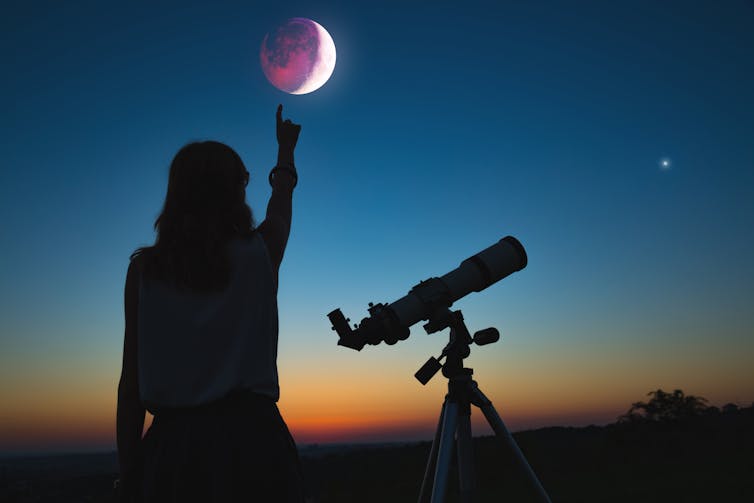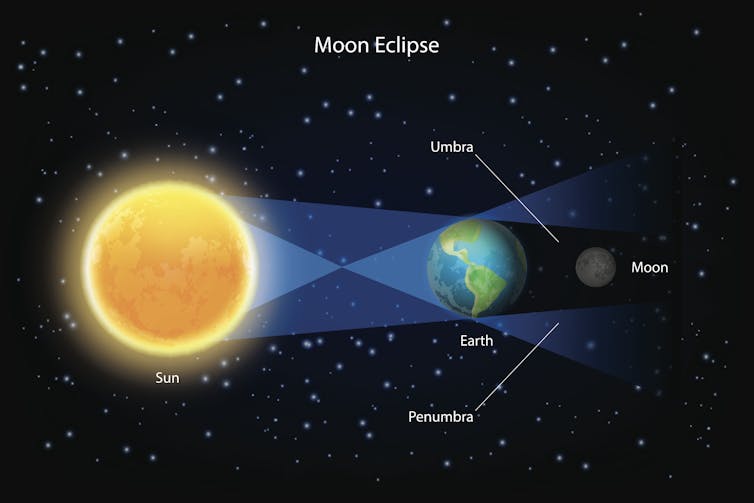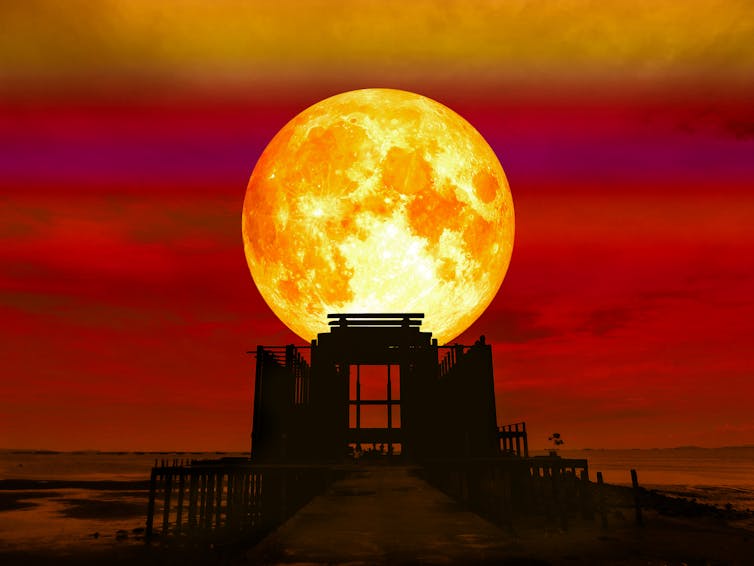
For more of what to expect from the blood moon July 2018, read our previous blood moon explainer here.
Millions of people will have the opportunity to see a lunar eclipse – an event popularly known in the media as a “blood moon” – on Friday July 27.
Visible for most of the world – only North America and Greenland are expected to miss out – it’s set to be the longest one this century, so there is plenty of time to take a look.
During such an eclipse, the full moon moves into the shadow of the Earth cast by the sun, and is momentarily darkened.
Some sunlight still reaches the moon, refracted by the Earth’s atmosphere, however, illuminating it with an ashen to dark red glow, the colour depending on atmospheric conditions.
As a communicator of astronomy, the term “blood moon” is a major thorn in my side, since it suggests something other than a lunar eclipse and conjures images of a moon shimmering in crimson red colours, which is not at all accurate.
But as a cultural astronomer, the phrase displays some of the interesting ways in which modern society creates its sky stories.
Lunar eclipses have fascinated cultures across the globe, and inspired several striking myths and legends, many of which portray the event as an omen. This is not surprising, since if anything interrupts the regular rhythms of the sun or moon it impacts strongly upon us and our lives.































































































